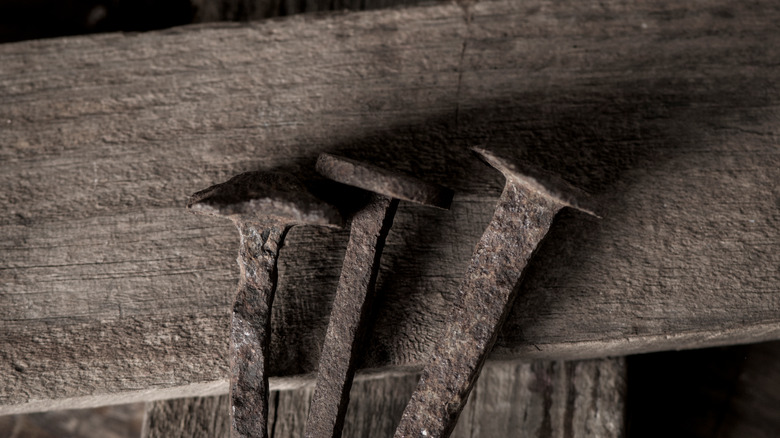What Really Happens To Your Body During A Crucifixion
Human beings have come up with some pretty horrendous, if not creative, methods of torture and execution. The preferred mode of delivering capital punishment to the convicted varies by region and by era. Since recorded history, the powers that be have exacted death sentences to be carried out in ways ranging from stoning to burning to beheading. While critics of modern-day capital punishment will argue that current forms of execution are still barbaric and agonizing, you have to admit that we've come a long way in reducing the brutality and suffering of those being executed.
Historically, one of the more horrific ways to be put to death was to be crucified. The majority of the modern world associate this form of capital punishment with the execution of Jesus of Nazareth, but its roots go back several hundred years before his time. Thought to have been invented by the Abyssinians and the Babylonians around 500 B.C., crucifixion was introduced to the Romans 200 years later. The Romans used crucifixion as a way to put to death slaves, AWOL soldiers, and Christians, and very rarely used it on their own citizens. This was a popular way to punish outsiders by the Romans until is was banned outright by Emperor Constantine in the 4th century CE (via Pub Med).
But what is crucifixion exactly, and how does it kill you?
Nailing the hands and feet
In preparing to crucify a person, a wooden structure is erected. While most commonly in the form of a lower case "t," some executions by crucifixion were carried out by a single pole, sans a cross beam. The "t" was laid on the ground, and the condemned secured to it. Some offenders had their hands and feet tied to it, the arms outstretched along the horizontal beam. But more often than not, the offender had his wrists nailed to the cross beam, and the feet nailed to the upright. The legs were positioned at a 45 degree angle (via South African Medical Journal, posted at the National Library of Medicine).
The nails driven into the wrists would sever the median nerve, immediately causing paralysis in the hands of the crucified (via The Guardian). Once secured, the cross was hoisted off of the ground by ropes and set upright. If the person were to be left on the ground with the injuries already sustained by the nails, they would slowly bleed out or succumb to the elements, which could take weeks. But by setting them upright, the execution speeds up a bit, using gravity as a tool.
The strain on the body's muscles is noticed immediately, as it struggles to maintain its position against the nails. The muscular pain, while horrendous, is nothing compared to what happens to the body next.
Slowed breathing
With the body upright and the muscles screaming out, the breathing will quickly begin to slow down. All that pain increases levels of anxiety (via The Guardian). The strain on the arms will eventually pop the shoulders out of their sockets. When this occurs, it's the chest that is keeping the body in its upright position.
The chest muscles can only withstand so much of the weight of the body. Likewise, the heart struggles to keep up at this point. The position of the chest, straining, significantly impairs the crucified's ability to breathe. This will lead to death by slow suffocation in most cases, which could happen anywhere from four hours to two days after first being positioned upright. The lucky ones (if you want to call them lucky) had their legs broken by clubs before being lifted into the air, as this made gravity do its job much quicker, resulting in death within an hour or two. Since the Roman soldiers posting watch had to stay until the death of the crucified, sometimes they would make their job shorter with a spear to the heart, or blows to the chest, says the South African Medical Journal. Another way to finish the job quickly was to build a fire at the base of the cross — the smoke would asphyxiate the crucified.
None of them are good ways to go out, but slowly being suffocated after nails are driven into your hands and feet might be one of the worst deaths our fellow humans ever devised.


